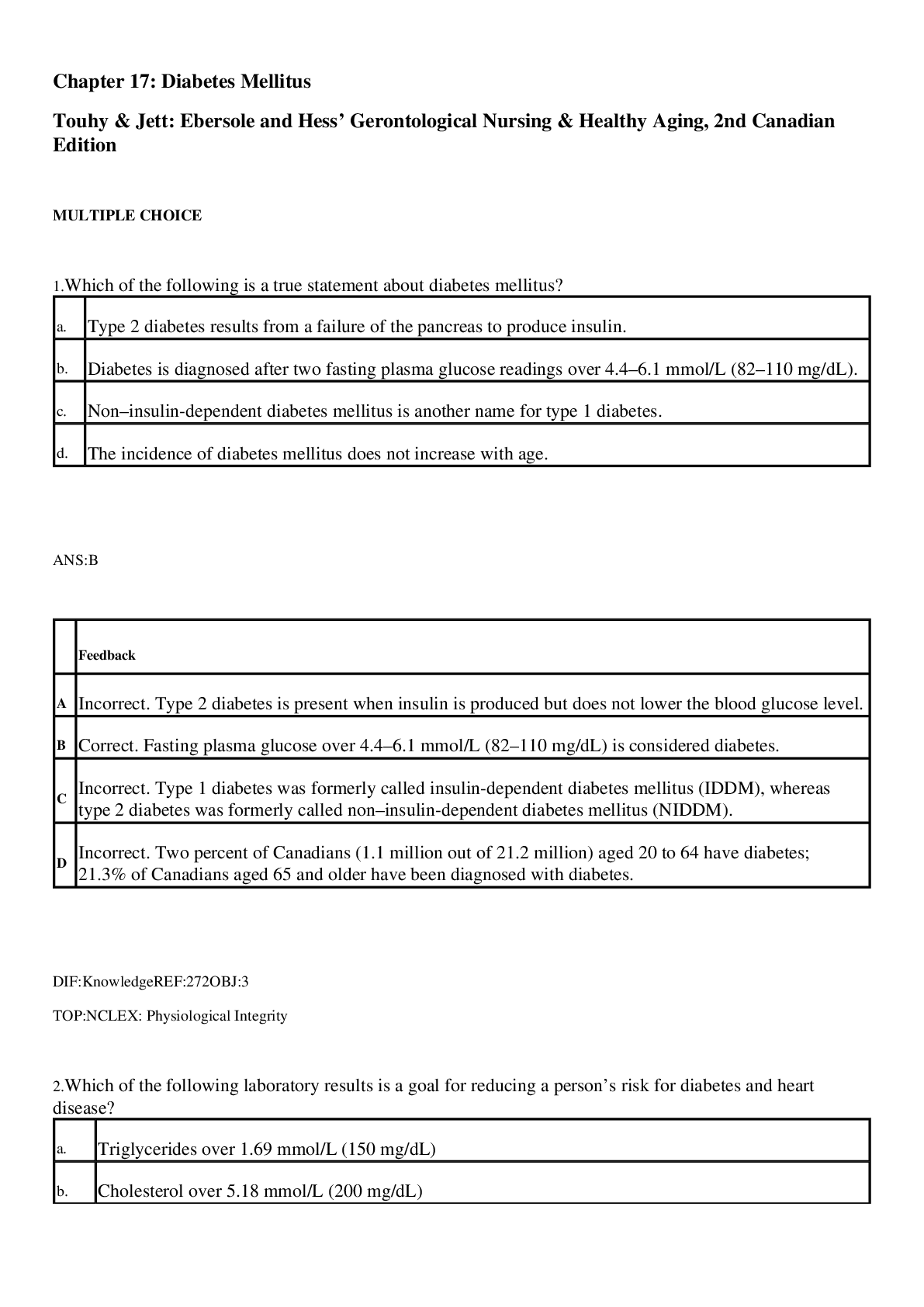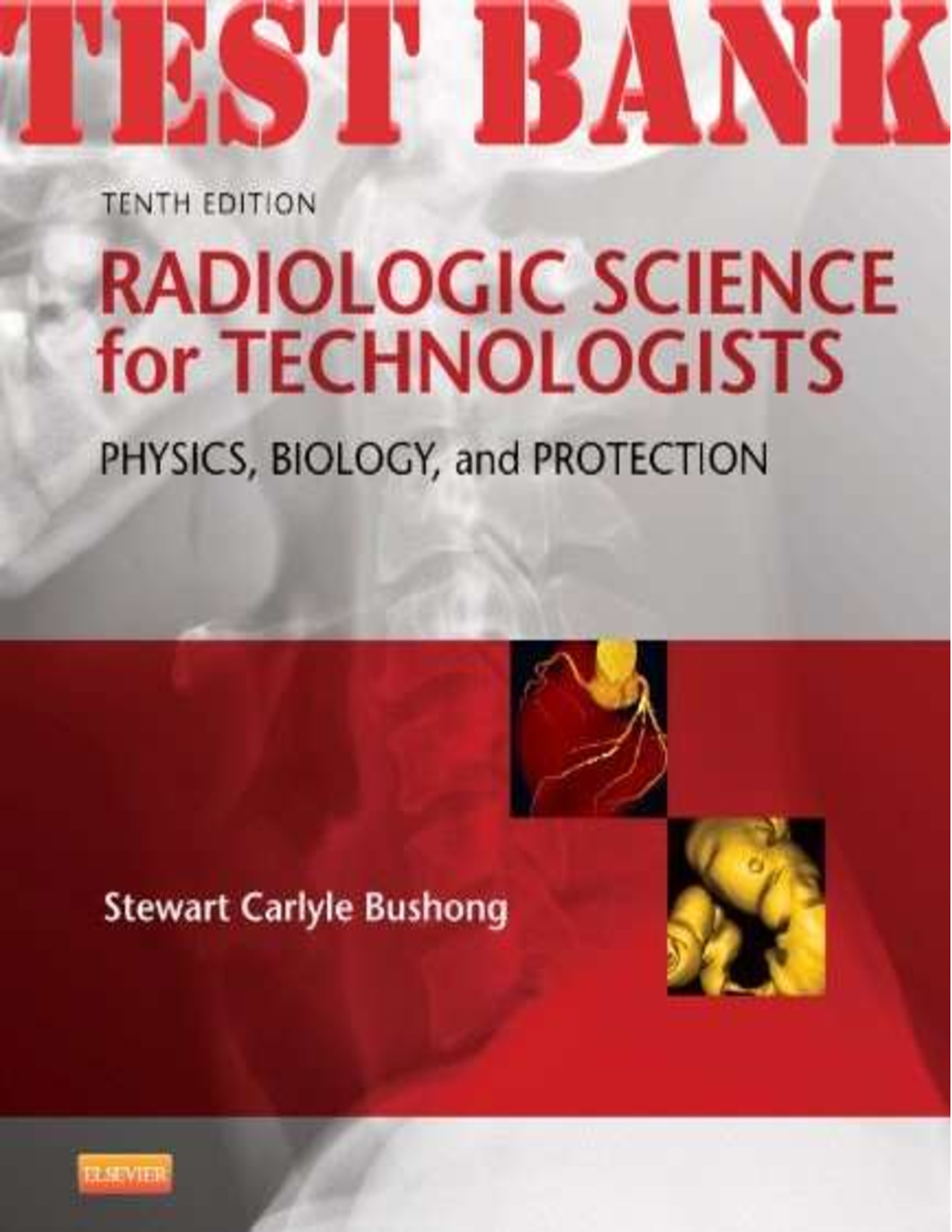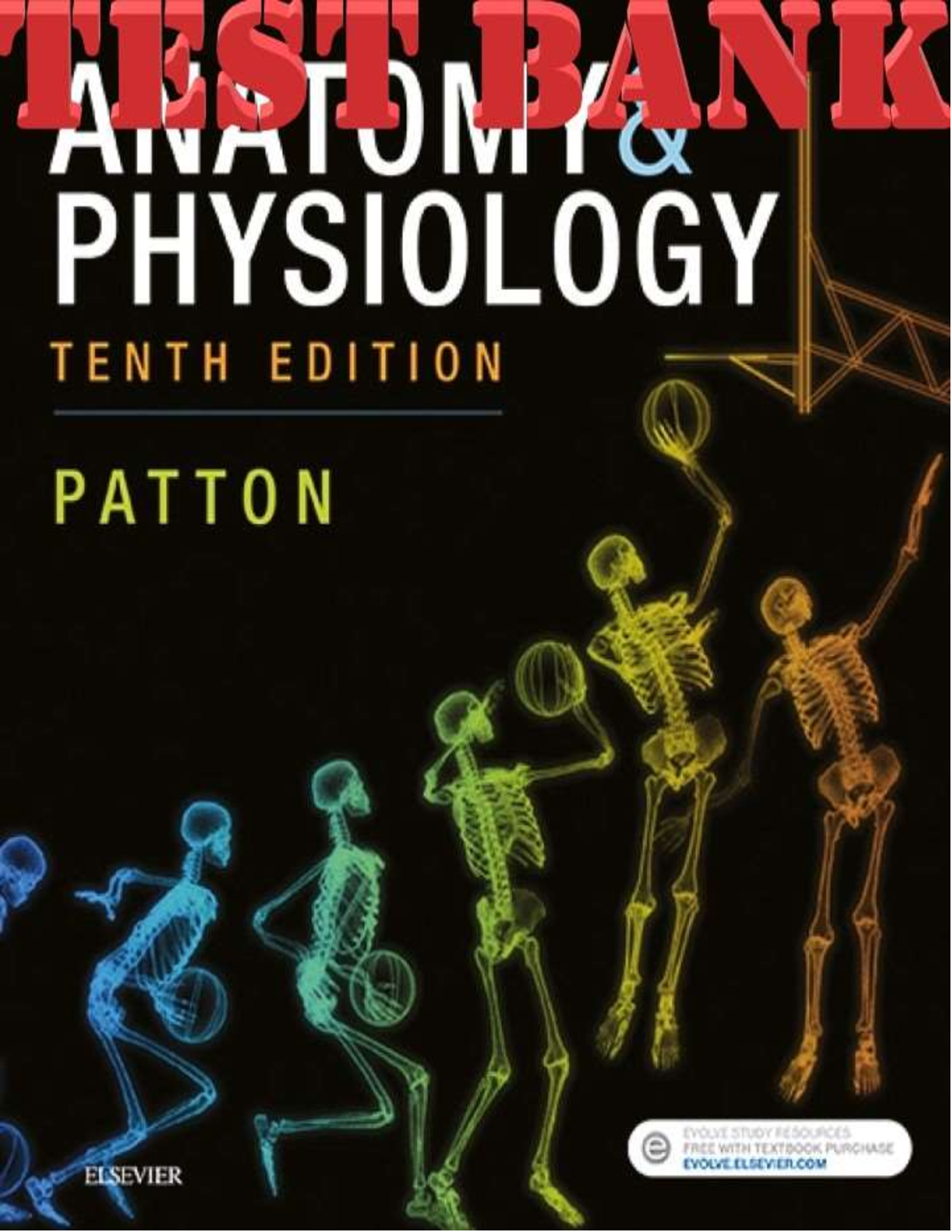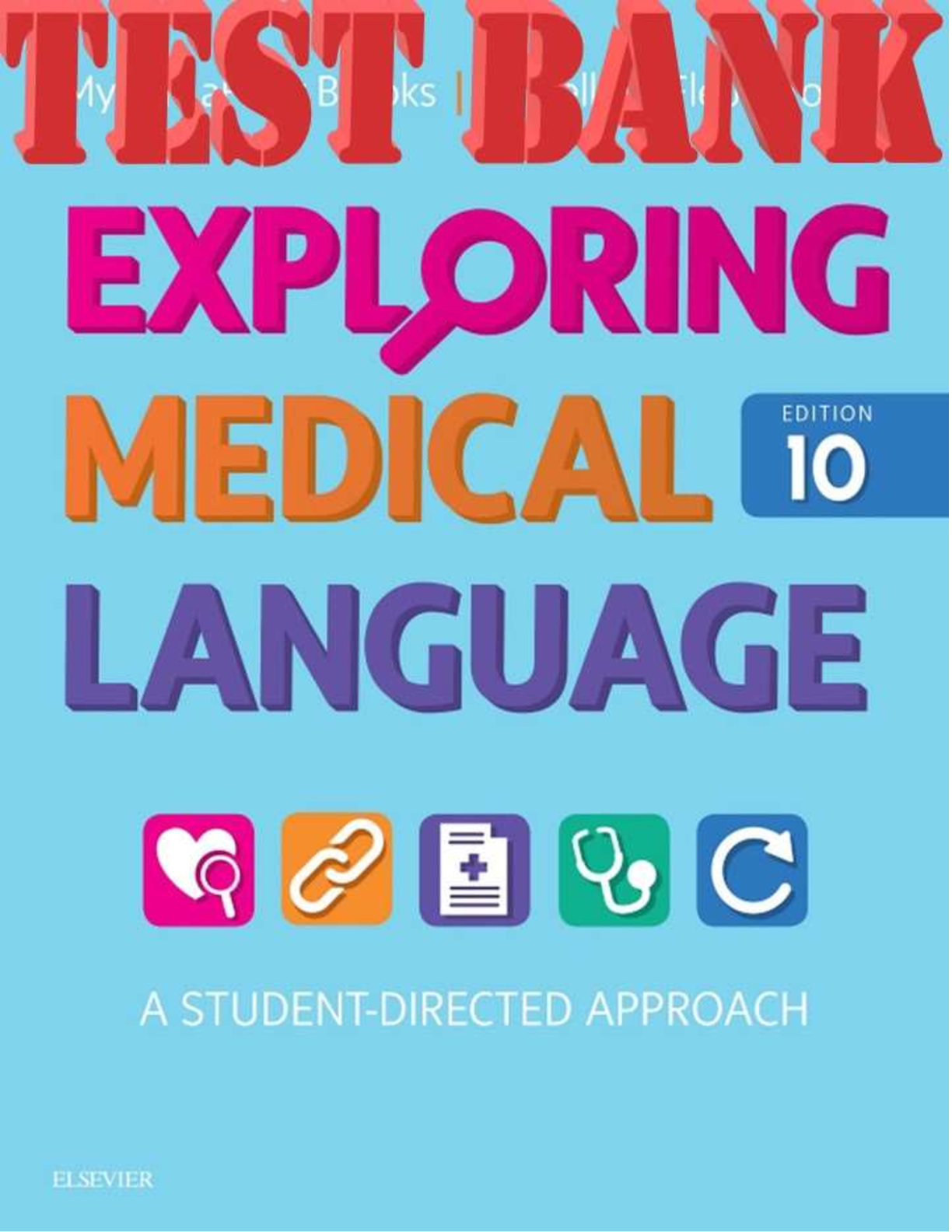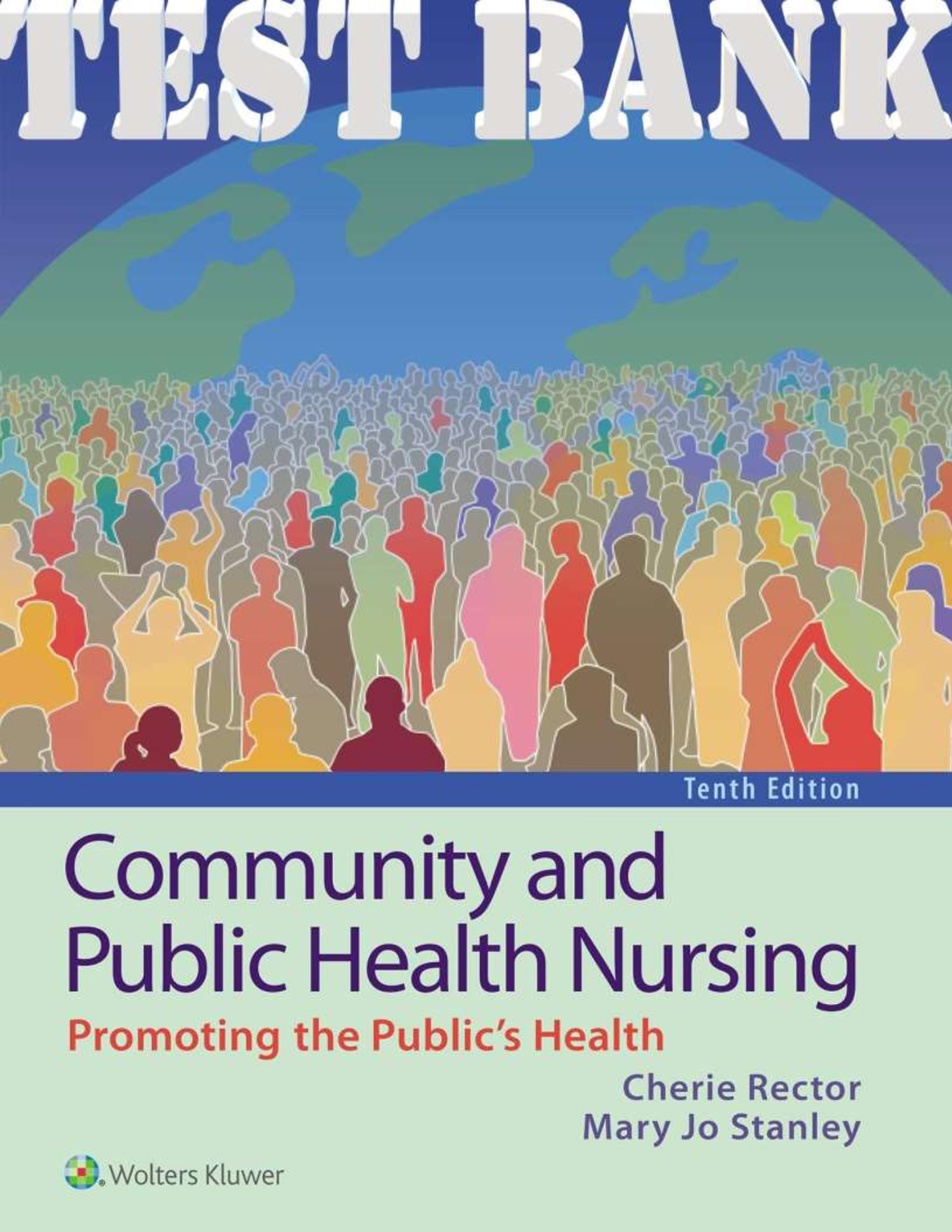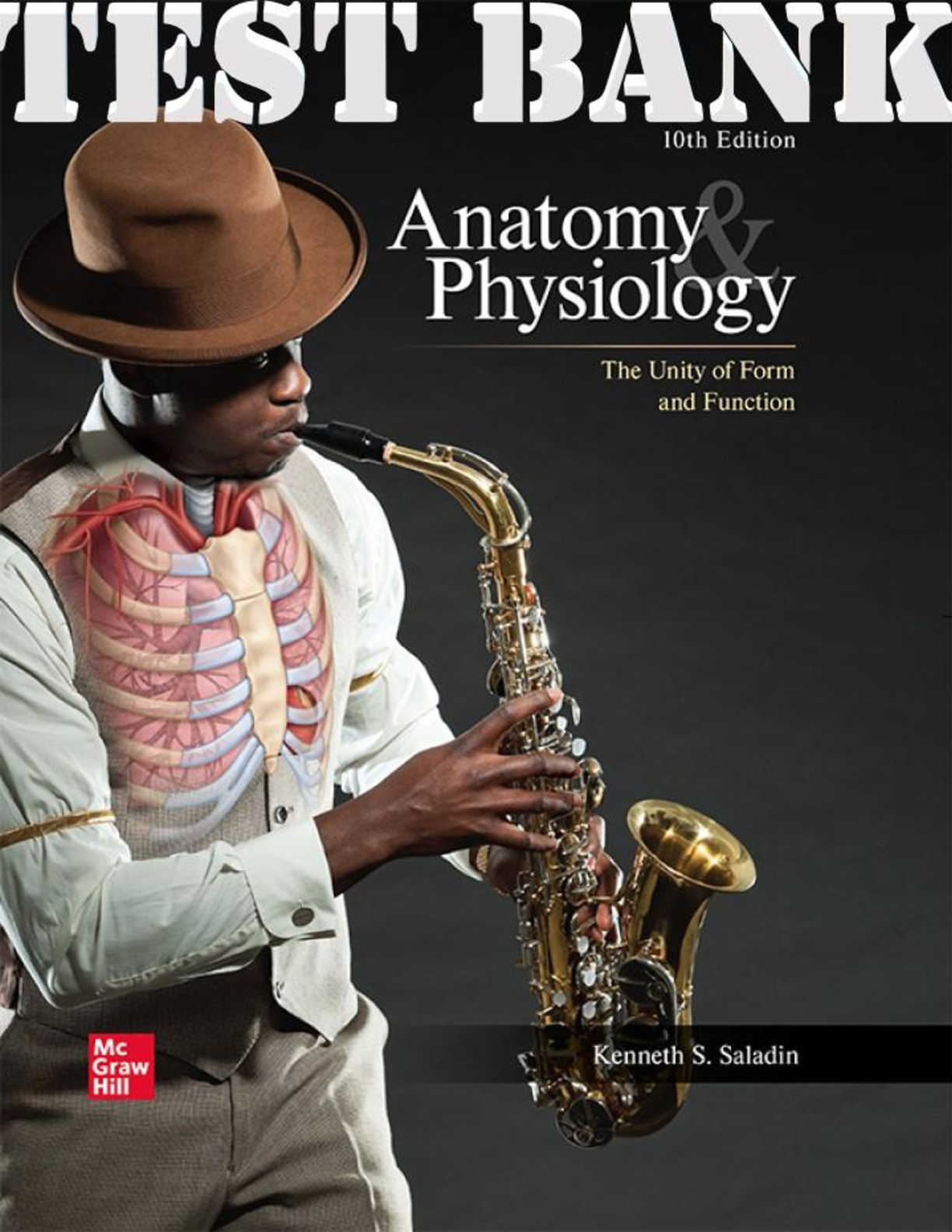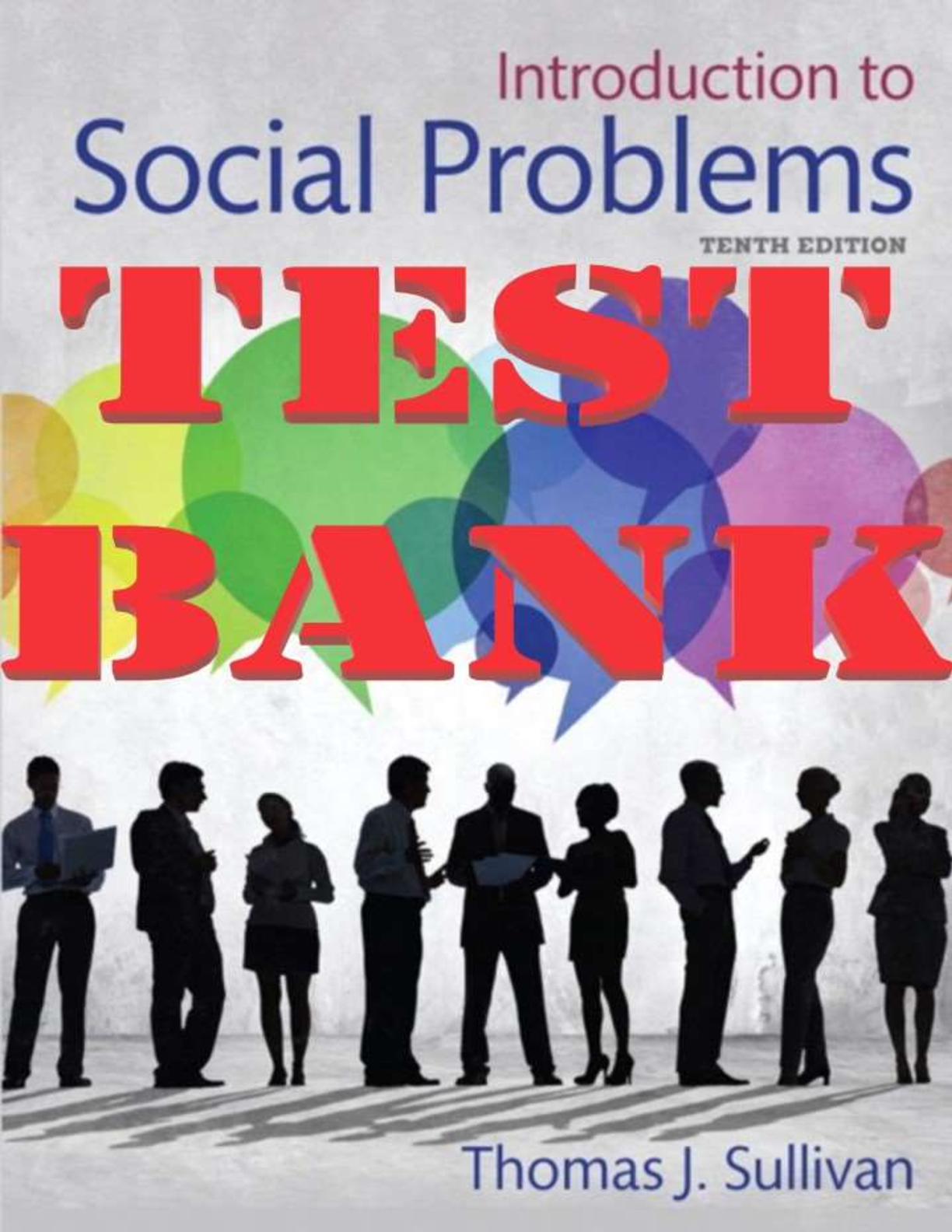*NURSING > TEST BANK > TEST BANK FOR PORTH’S PATHOPHYSIOLOGY 10TH EDITION BY NORRIS CHAPTER 13: Organization and Control (All)
TEST BANK FOR PORTH’S PATHOPHYSIOLOGY 10TH EDITION BY NORRIS CHAPTER 13: Organization and Control of Neural Function
Document Content and Description Below
1. Which of the following physiologic principles would be considered a function of the somatic nervous system? A) The act of typing a report using a computer keyboard B) Withdrawing the hand after t... ouching a hot surface C) The patellar reflex "knee jerk" activated by tapping the patellar tendon abdominal viscera D) The beginning of depolarization in the cardiac conduction of impulses Ans: A Feedback: The somatic nervous system provides sensory and motor innervation for all parts of the central nervous system (CNS) and peripheral nervous system (PNS) except viscera, smooth muscle, and glands. The autonomic nervous system (ANS) provides efferent motor innervation to smooth muscle, the conducting system of the heart, and glands. 2. Following a car accident that has resulted in partial amputation of the lower limbs, the client's body has implemented a compensatory mechanism releasing antidiuretic hormone (ADH) into the blood stream, causing retention of water and vasoconstriction of blood vessels. This is accomplished as a result of: A) Rapid axonal transport of ADH from the hypothalamus into the posterior pituitary B) Extension of Nissl bodies and free ribosomes carrying ADH into the dendrites C) Dendrites conducting information and ADH toward the cell body D) Afferent, or sensory, neurons of the PNS transmitting information to the CNS Ans: A Feedback: Antidiuretic hormone (ADH) and oxytocin, which are synthesized by neurons in the hypothalamus, are carried by rapid axonal transport to the posterior pituitary, where the hormones are released into the bloodstream. ADH increases peripheral vascular resistance (vasoconstriction) and thus increases arterial blood pressure. This becomes an important compensatory mechanism for restoring blood pressure in hypovolemic shock such as that which occurs during hemorrhage. The proteins and other materials used by the axon are synthesized in the cell body and then flow down the axon through its cytoplasm. The Nissl bodies and free ribosomes extend into the dendrites, but not into the axon. The dendrites (i.e., “treelike”) are multiple, branched extensions of the nerve cell body; they conduct information toward the cell body and are the main source of information for the neuron. The dendrites and cell body are studded with synaptic terminals that communicate with axons and dendrites of other neurons. 3. A 60-year-old woman has been recently diagnosed with multiple sclerosis, a disease in which the oligodendrocytes of the client's central nervous system (CNS) are progressively destroyed. Which physiologic process within the neurologic system is most likely to be affected by this disease process? A) Oxygen metabolism B) Neurotransmitter synthesis C) Nerve conduction D) Production of cerebrospinal fluid Ans: C Feedback: The oligodendrocytes form the myelin in the central nervous system (CNS). As with peripheral myelinated fibers, the covering of axons in the CNS increases the velocity of nerve conduction. Oxygen metabolism and synthesis of CSF and neurotransmitters are not directly affected. 4. Following a stroke, injury to nerve cells within the central nervous system needs to be repaired. The health care provider knows that which of the following processes explains how this occurs? A) Astrocytes fill up the space to form a glial scar, repairing the area and replacing the CNS cells that cannot regenerate. B) The microglia are responsible for cleaning up debris after cerebral infection, or cell death. C) Ependymal cells are responsible for phagocytosis. D) Oligodendrocytes are responsible for integrative metabolism. Ans: A Feedback: Astrocytes are the largest and most numerous of neuroglia and are particularly prominent in the gray matter of the CNS. They form a network within the CNS and communicate with neurons to support and modulate their activities. Astrocytes are also the principal cells responsible for repair and scar formation in the brain. The microglia is a small phagocytic cell that is available for cleaning up debris after cellular infection or cell death. The ependymal cell forms the lining of the neural tube cavity, the ventricular system. The oligodendrocytes form the myelin in the CNS. Instead of forming a myelin covering for a single axon, these cells reach out with several processes, each wrapping around and forming a multilayered myelin segment around several different axons. [Show More]
Last updated: 1 year ago
Preview 1 out of 13 pages
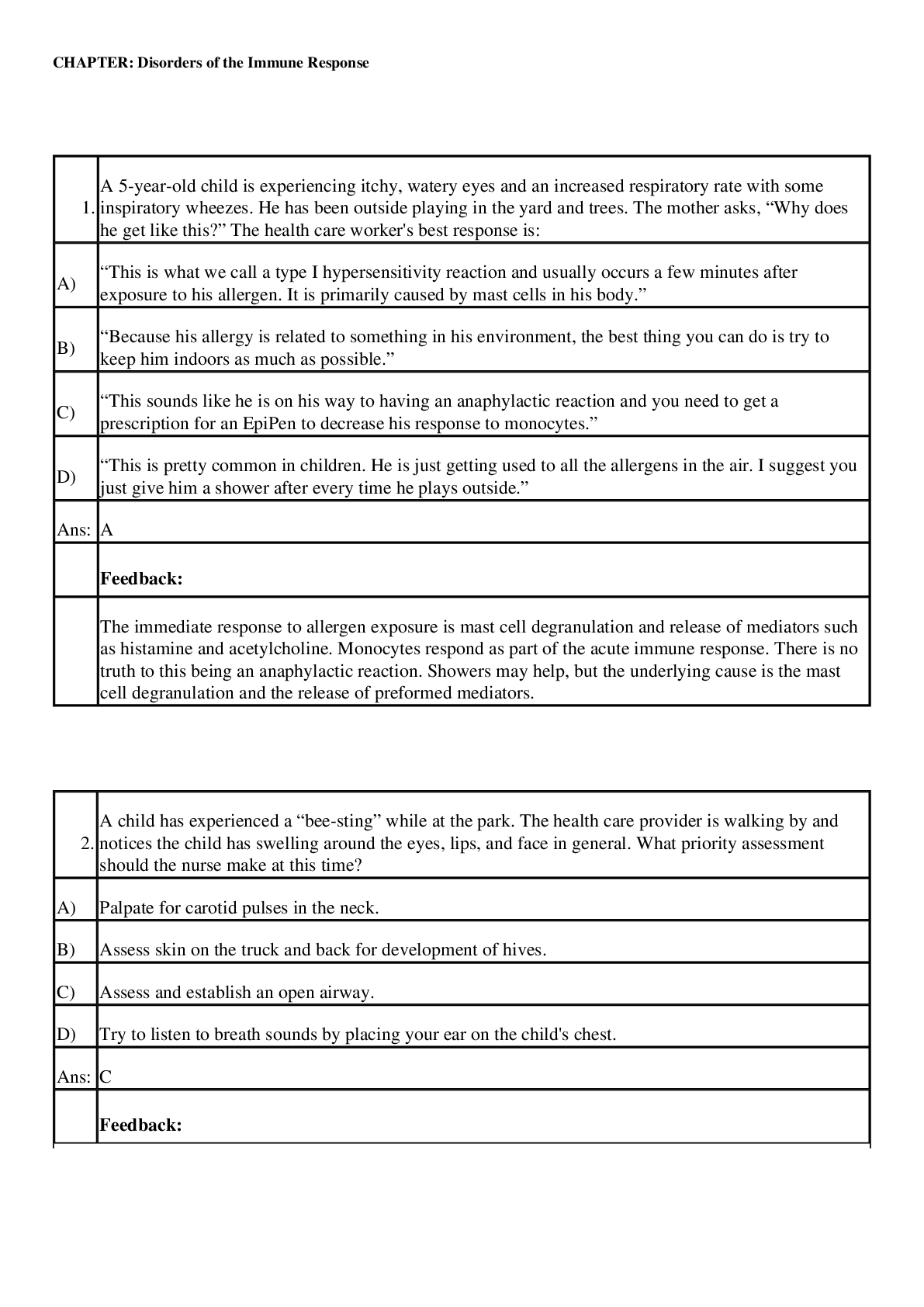
Buy this document to get the full access instantly
Instant Download Access after purchase
Add to cartInstant download
We Accept:

Also available in bundle (1)

TEST BANK FOR PORTH’S PATHOPHYSIOLOGY 10TH EDITION BY NORRIS ALL CHAPTERS
THIS PAPER CONSISTS OF ALL CHAPTERS
By GoldenA 3 years ago
$24
44
Reviews( 0 )
$4.00
Document information
Connected school, study & course
About the document
Uploaded On
Mar 01, 2021
Number of pages
13
Written in
Additional information
This document has been written for:
Uploaded
Mar 01, 2021
Downloads
0
Views
99


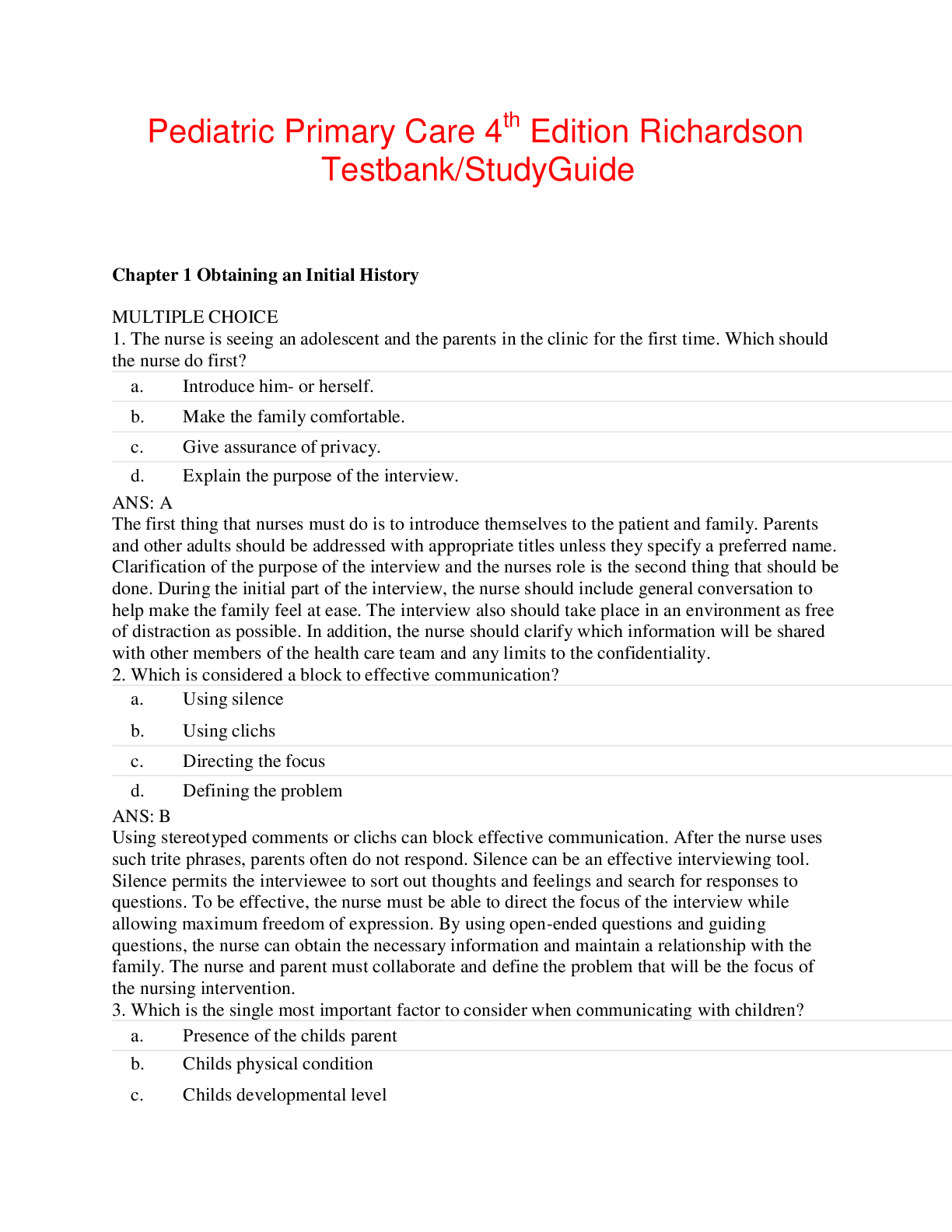

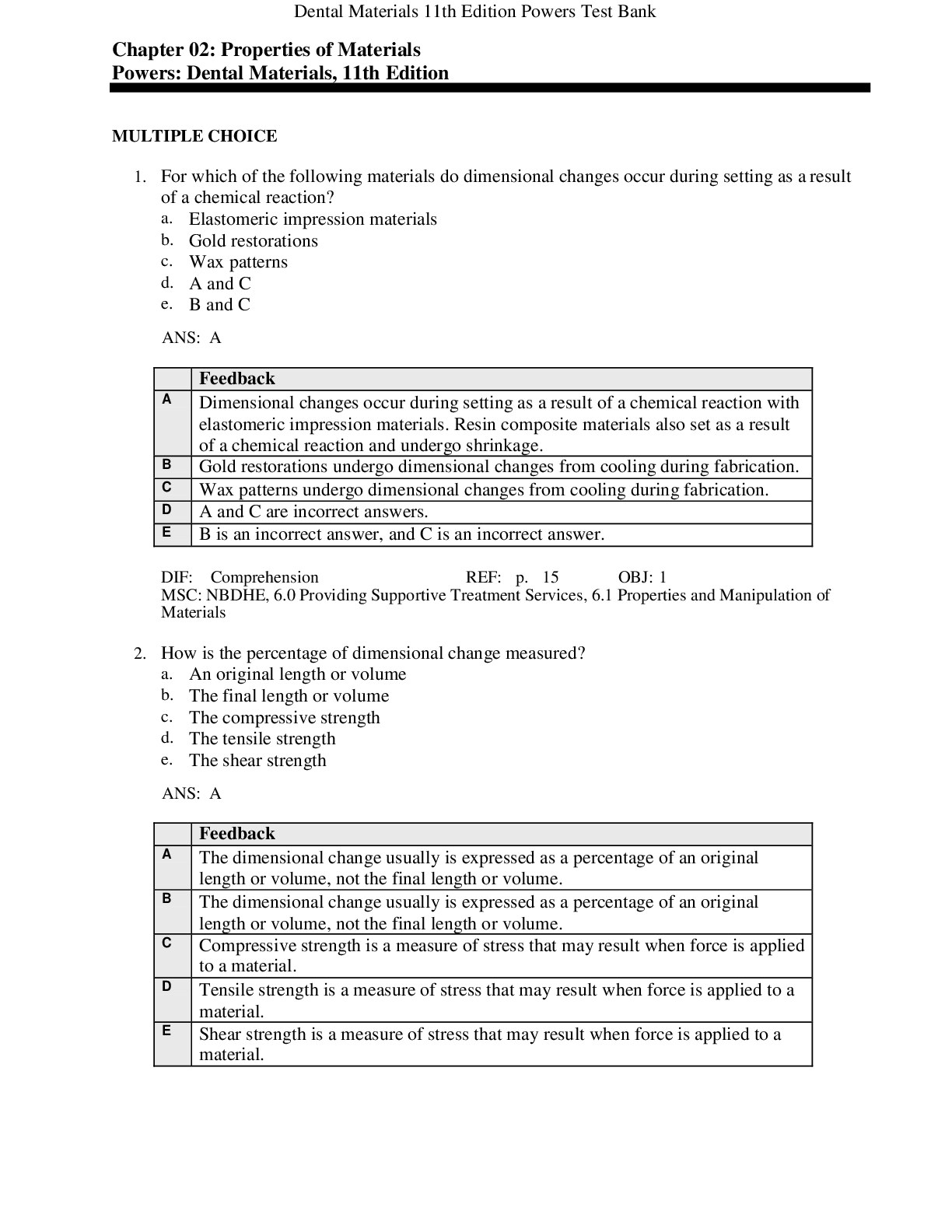
.png)
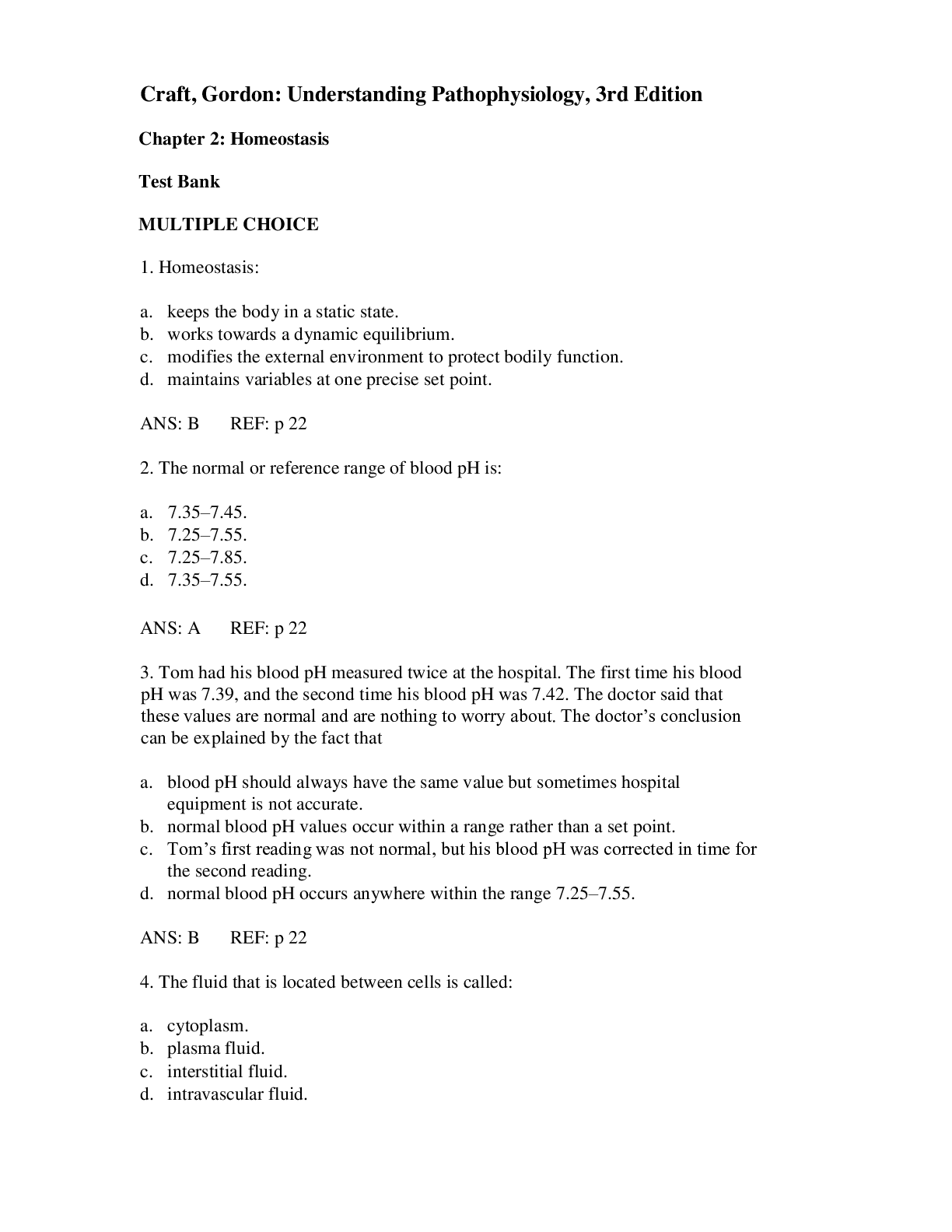



.png)
.png)
